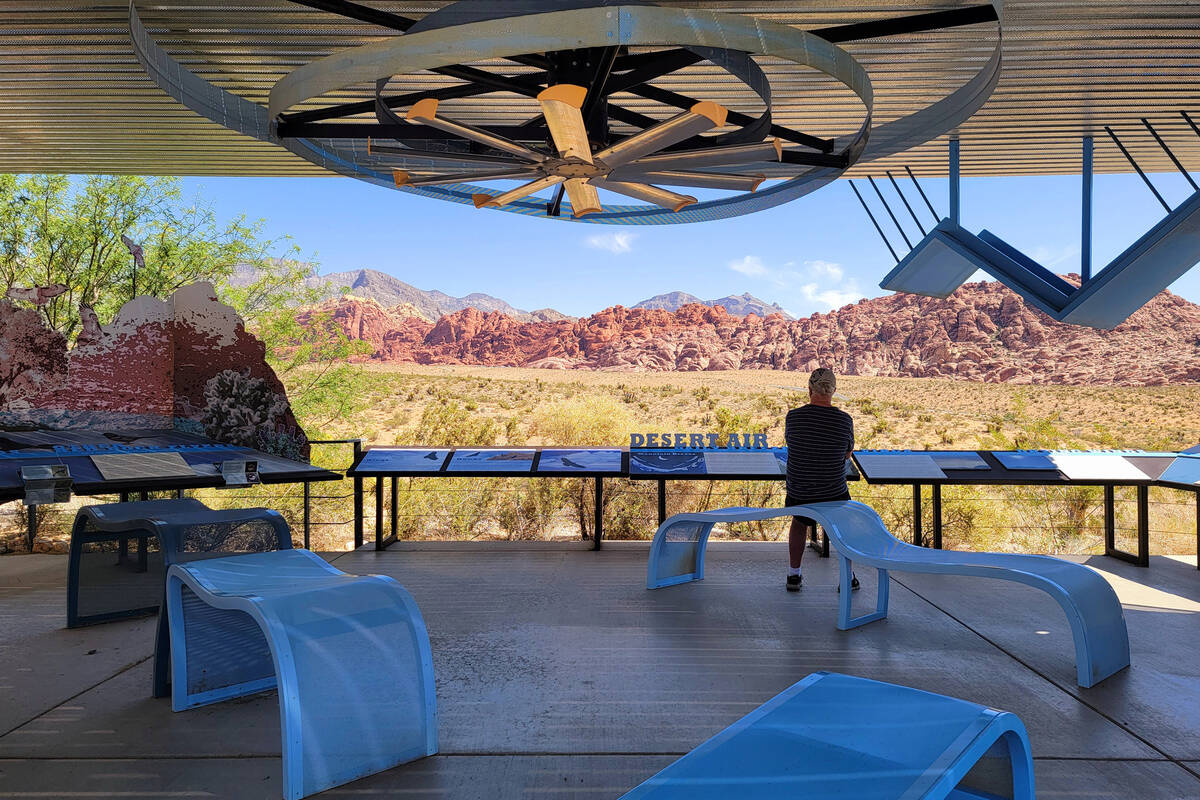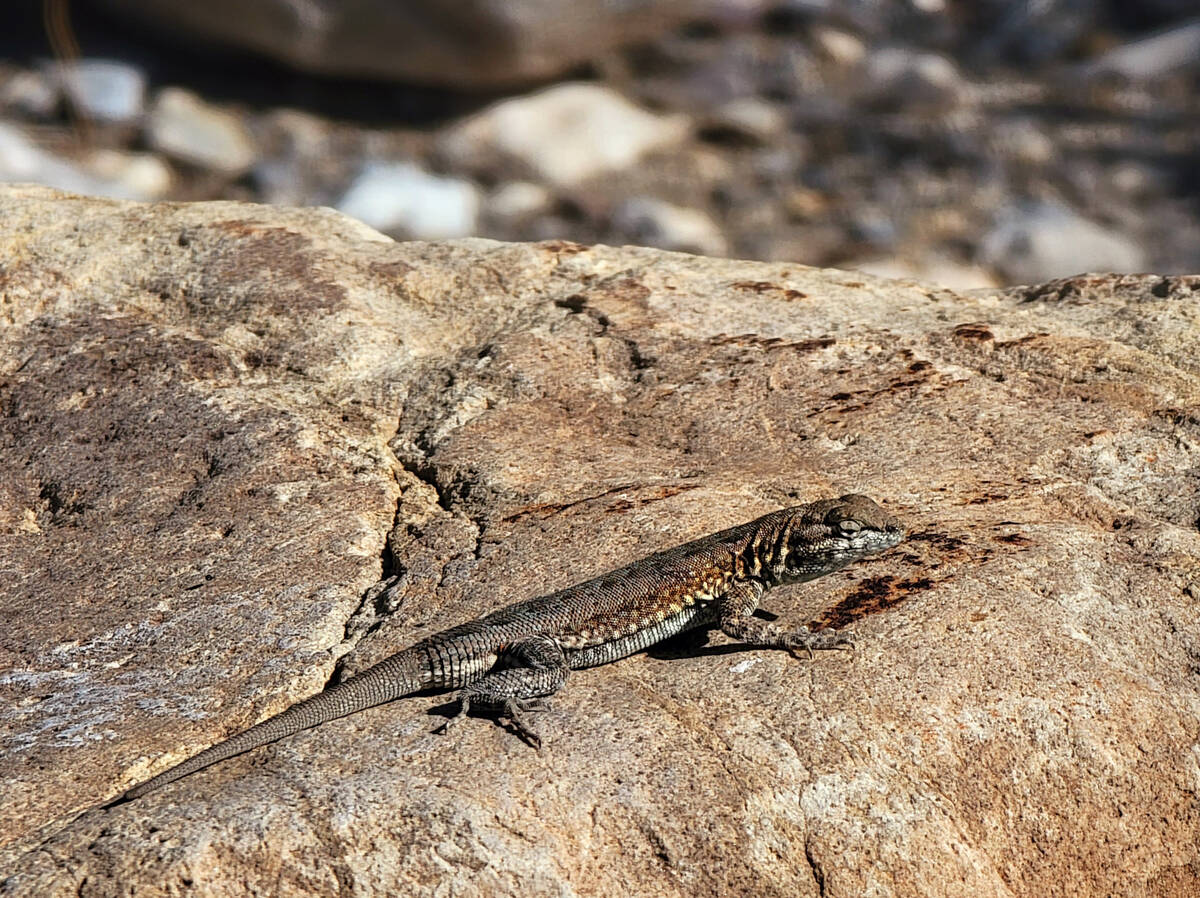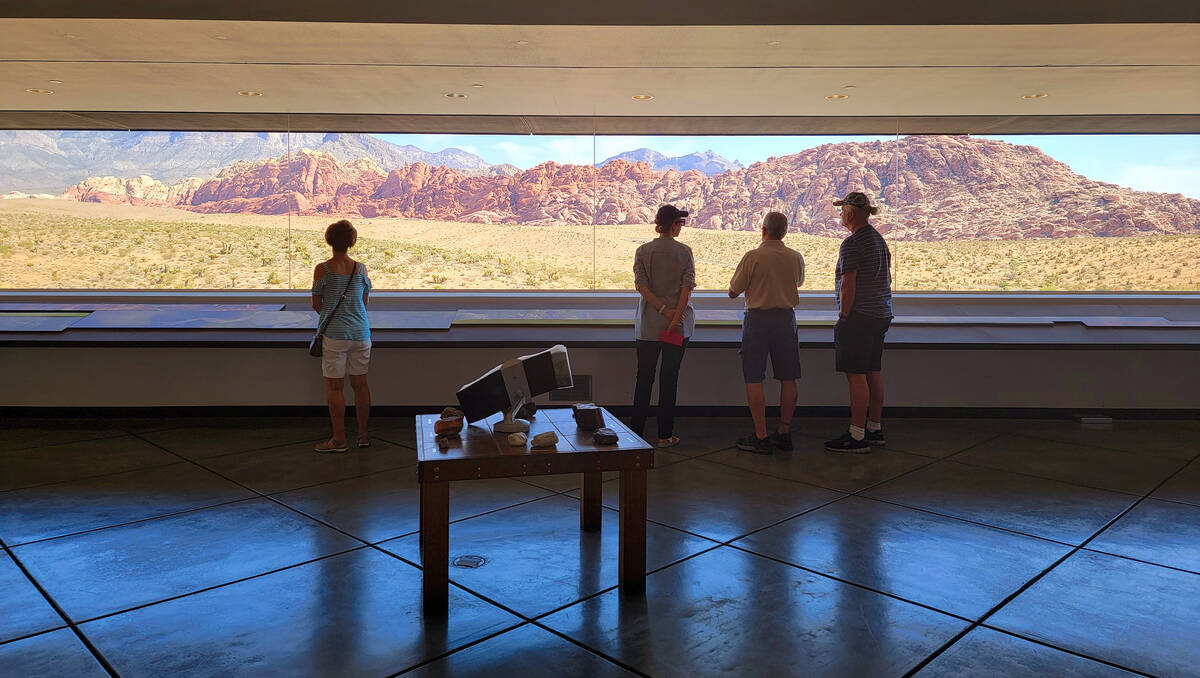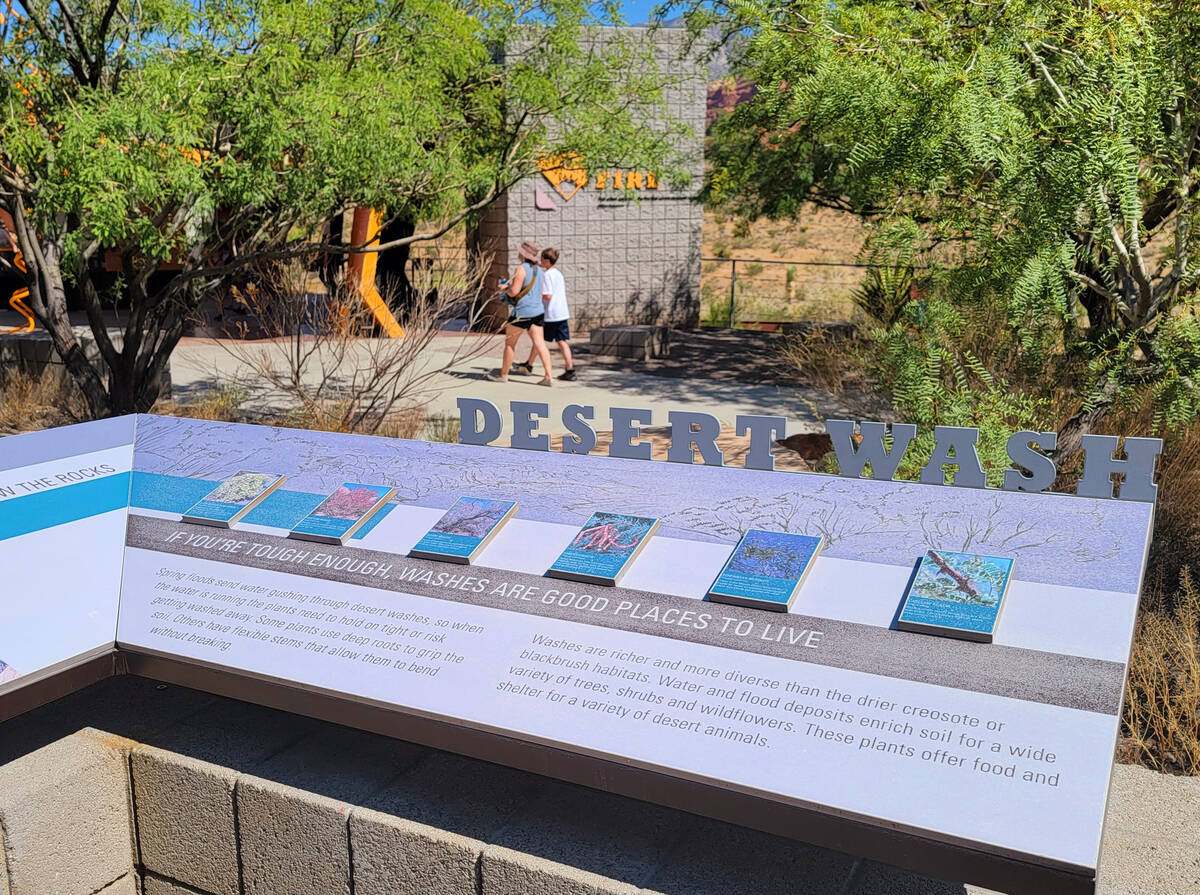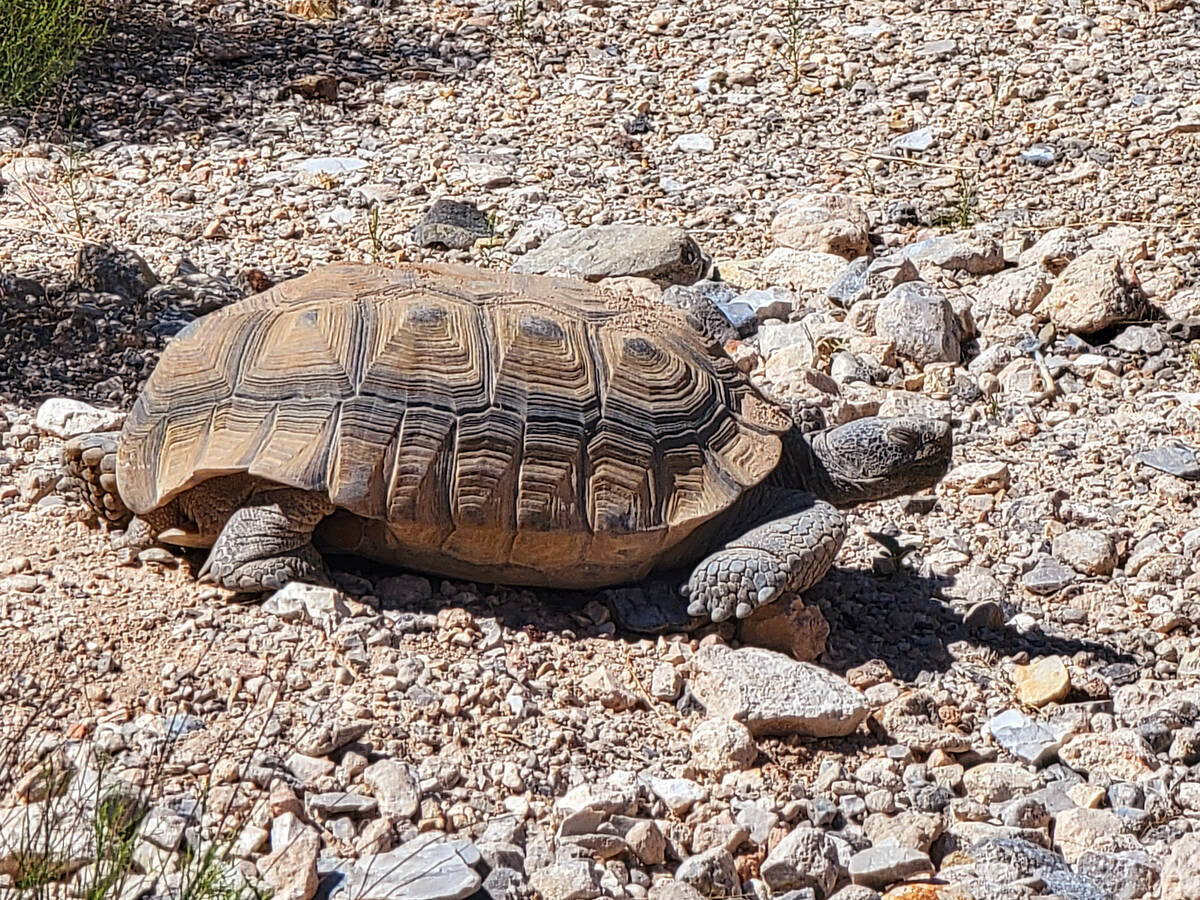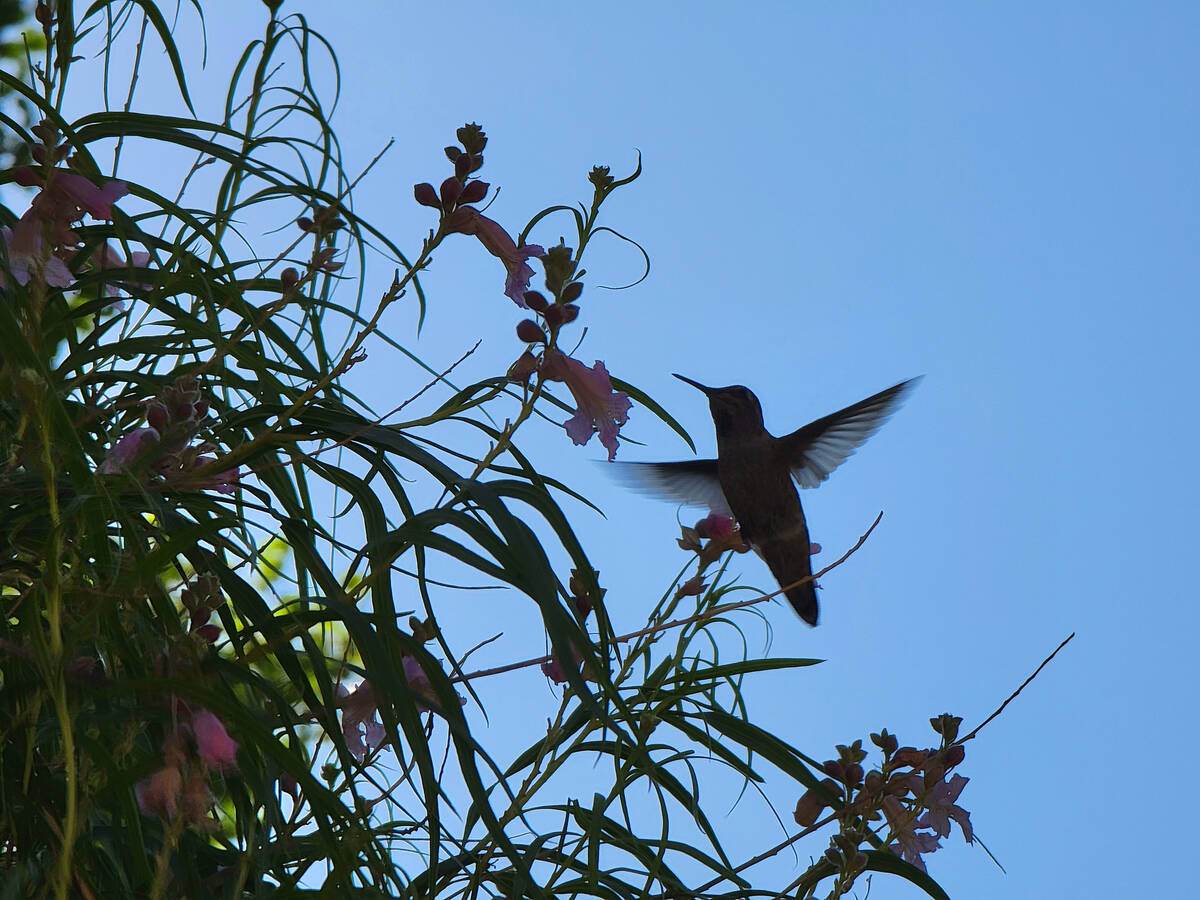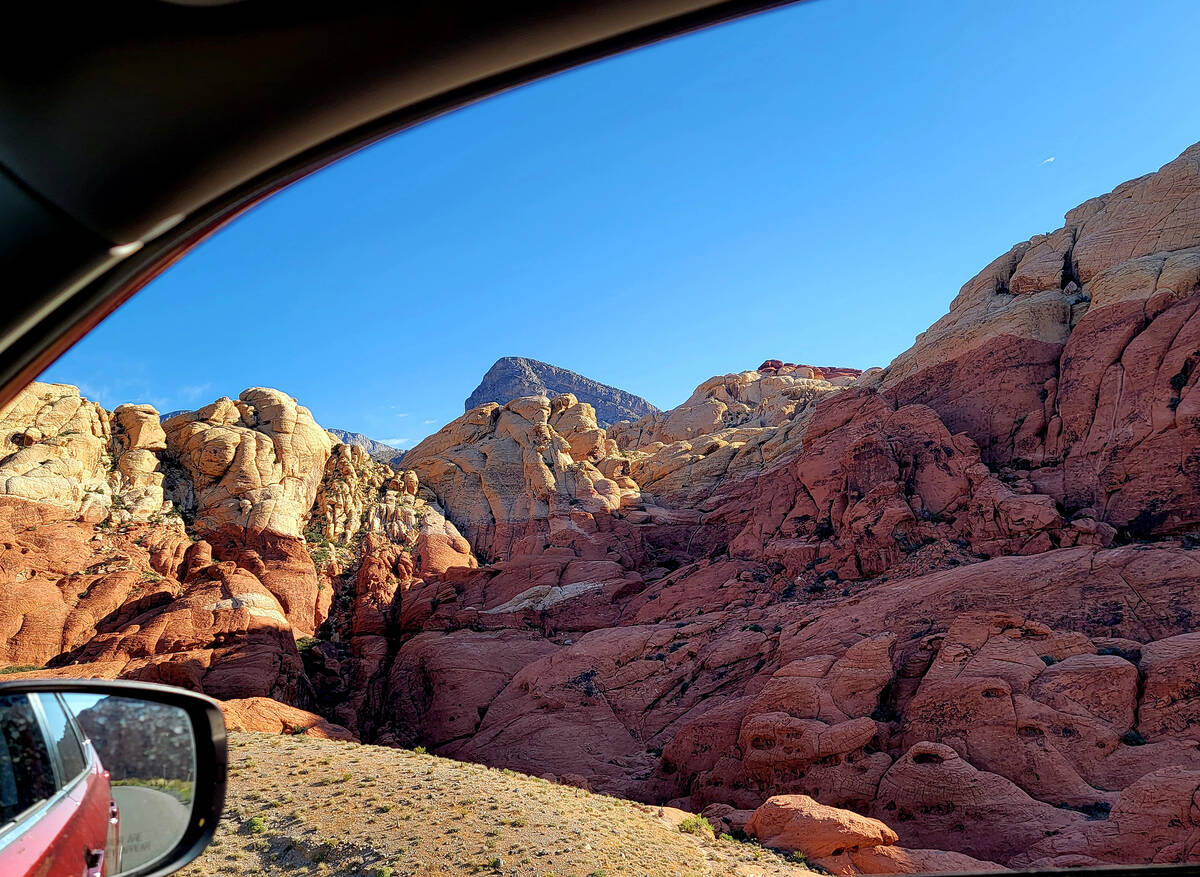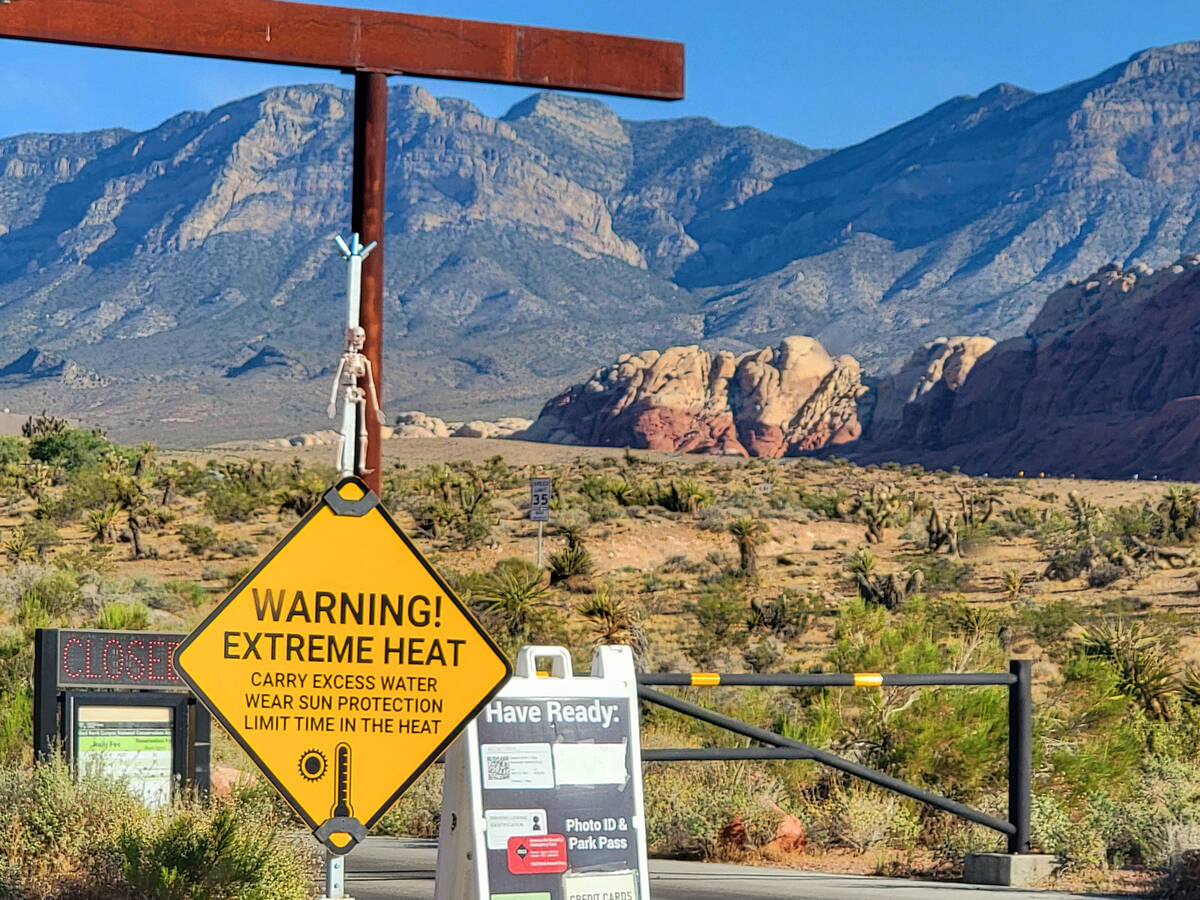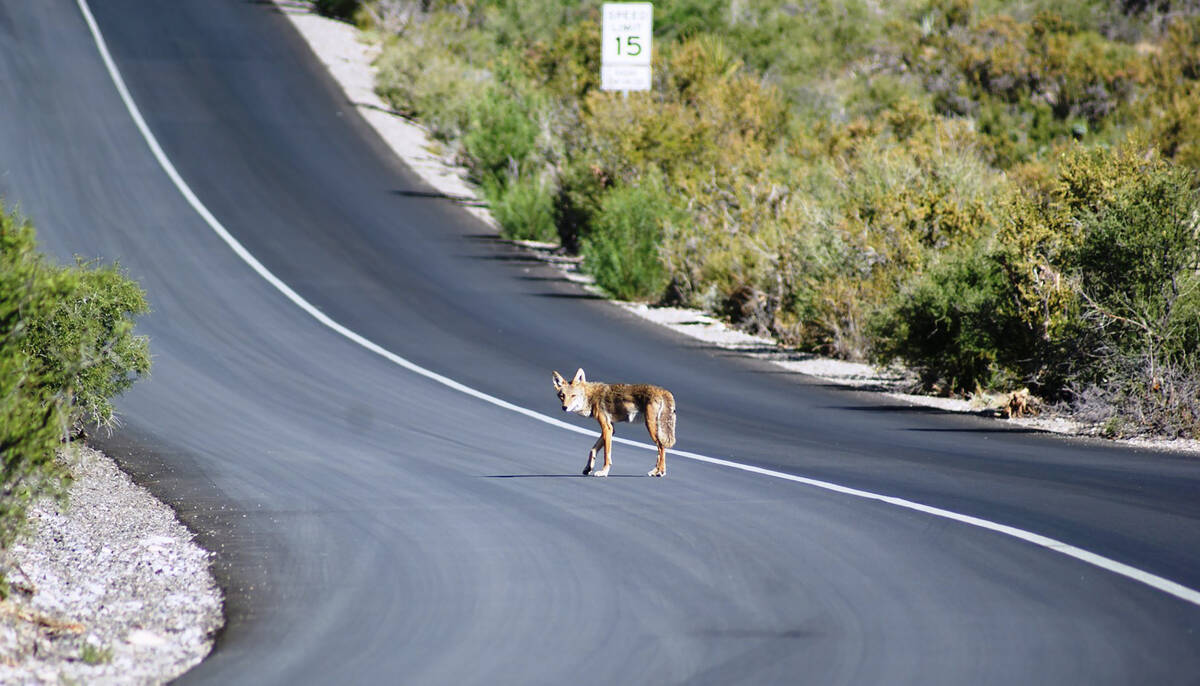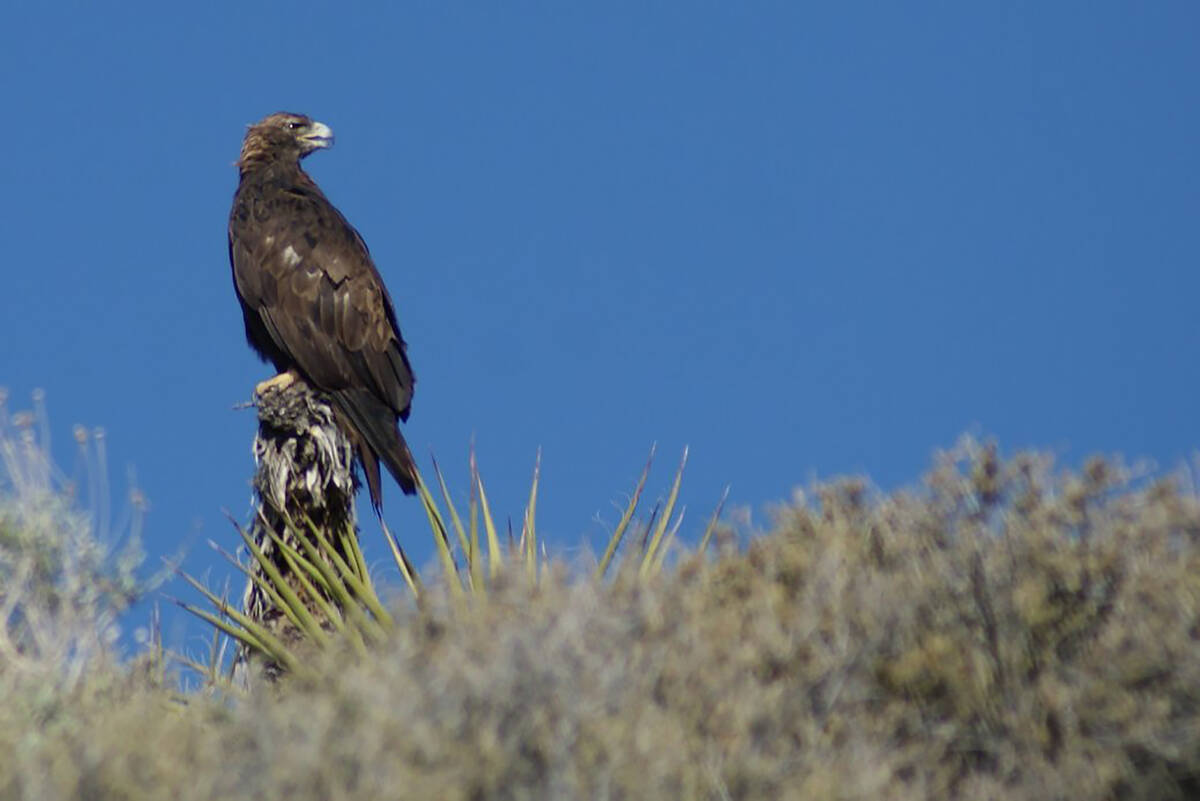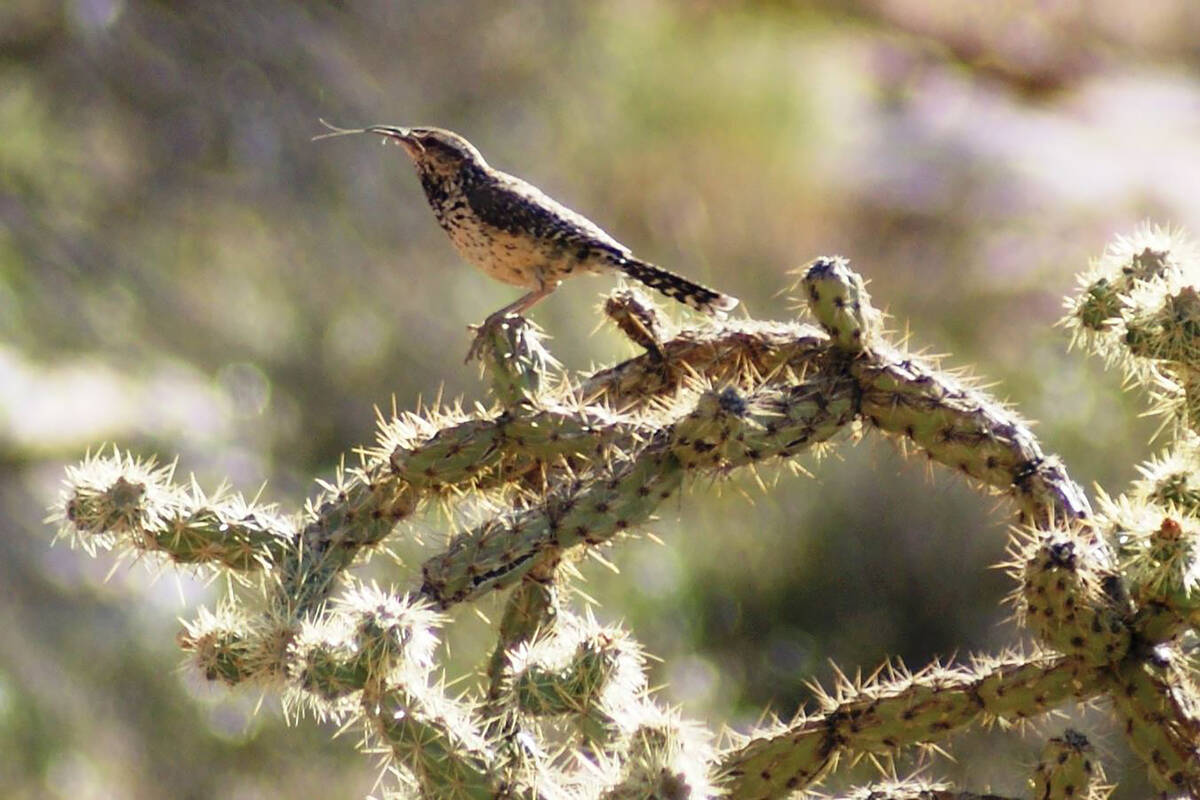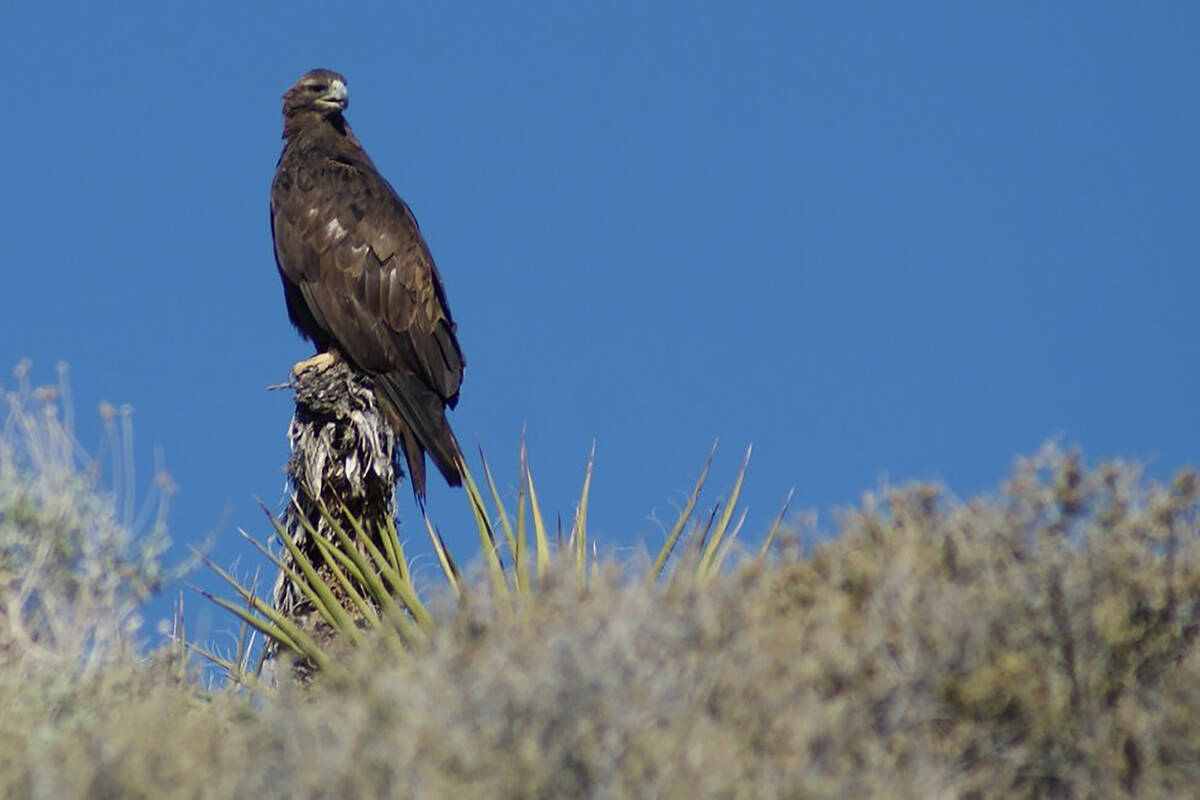Enjoying Red Rock’s scenic splendor in summer requires strategy
For anyone needing a Red Rock fix in July or August, a successful approach would include early-bird behavior, heat tolerance, educational ambition and plenty of drinking water.
July and August are not the months to plan a potentially lethal and lengthy desert trek at high noon, but safer, common-sense alternatives exist for enjoying Red Rock Canyon National Conservation Area on sizzling summer days, just not when excessive heat warnings have been issued.
Entrance gates open daily at 6 a.m. for Red Rock’s 13-mile one-way scenic loop, and doors open at 8 a.m. for the visitor center, which is located off to the left shortly after motorists make their way past entrance gates. My recent early-bird strategy meant arriving at 6:30 a.m. to drive the loop, lower my windows to take photographs from inside the car at points of interest and make a couple of quick stops for exploration.
After completing the 13-mile loop and exiting back onto state Route 159, I re-entered the conservation area about 9 a.m. to enjoy the exceptionally informative educational exhibits at the visitor center, where shade and air-conditioning provide a respite from the heat. Stopping at the visitor center first would make more sense in fall, winter and spring, but not in summer, when favorable, early-morning weather needs to be reserved for outdoor time.
While fees are still collected or visitor passes checked at the gates, online reservations are not required from June 1 to Sept. 30. I showed my America the Beautiful annual pass twice to avoid the $20 entrance fees (the visitor center is accessible only after passing through the entrance gate).
At the fee station, a large yellow warning sign decorated with a skeleton alerts visitors of extreme heat at Red Rock Canyon National Conservation Area. Summer visitors are advised to carry excess water, wear sun protection and limit their time in the heat.
A quieter loop
From the comfort of an air-conditioned car at the beginning of the scenic loop, motorists can get their Red Rock fix by watching the Calico Hills flow and fold in their geologically handsome ways. A couple of miles later, parking at normally bustling Sandstone Quarry is available because temperatures are too torturous to safely consider scrambling across beige and red sandstone hills that lead to some of the conservation area’s prettiest panoramic views.
Along the road, summer has zapped much of the green from plants, but lizards still zip across the pavement and birds fly above Mojave yuccas and creosote bushes in the early morning. Cactus fruit was ripening recently, and dried-up flowering plants were shedding seeds.
The normally trafficky loop was quiet en route to Willow Springs picnic area, where I’ve seen coyote pups play in the past. Three desert cottontails and a couple of ground squirrels crossed the road during a recent visit. They were foraging before the day’s heat turned animals into shade seekers.
Willow Springs is a reliable water source for wildlife, so it’s one of Red Rock’s best spots to see and hear birds, especially in summer. Among the species viewed there recently: white-throated swift, crissal thrasher, rock wren, phainopepla, juniper titmouse, spotted towhee, cactus wren, house finch and Woodhouse scrub-jay. A female hummingbird fed from the delicate flowers of a desert willow.
A 1.5-mile trail at Willow Springs picnic area can be enjoyed on early summer mornings because it includes some shade from trees and cliffs. Take breaks in that shade, and stay hydrated. Look for bighorn sheep high above on the cliffs, and always watch your step as the presence of rattlesnakes is a possibility. Native American rock art and agave roasting pits can also be seen along the short Willow Springs trail.
Ice Box Canyon is the next potential stop on the driving loop, and that offers another option for a shorter walk covering a fraction of the trail. Nothing strenuous is advised during summer’s supreme heat.
In the driving loop’s final stretch, I spotted a red-tailed hawk hunting for breakfast and a horned lizard crossing the road, looking nearly the same shape as a small tortoise but moving far more quickly. Sacred datura and milkweed were in bloom, attracting insect pollinators.
Desert survivors
The next chapter in my Red Rock summer story involved getting back on state Route 159 and returning to the entrance gate, so I could log some time at the visitor center and feed my curiosity about how plants and animals survive in the Mojave Desert.
Informational panels on a back patio of the visitor center share thousands of interesting bits of scientific fact and Native American history. The layout of shaded displays is designed in a way that frames views of the remarkable geology of Red Rock Canyon National Conservation Area.
Rescued and rehabilitated desert tortoises are held in pens in the outdoor exhibit space, giving visitors a chance to see a creature that’s rarely encountered in the wild.
But the space mostly is dedicated to sharing information with those taking the time to read about fauna like the kangaroo rat and flora including creosote. Much can be learned about ecology, hydrology and geology.
Curious about why Nevada’s bulky-yet-nimble state mammal, the bighorn sheep, doesn’t drop off cliffs more often? There’s an answer for that: “Their hooves are built for the job. With a hard outer edge and spongy center, they provide traction even on sheer rock, allowing the sheep to climb, leap and to escape predators such as mountain lions.”
Wondering about the lifestyle of a small rodent responsible for some holes in the ground seen along hiking trails?
“Kangaroo rats get all the water they need from seeds.” They reduce water loss by spending their days in underground burrows. “Highly efficient kidneys reduce the amount of water lost in urination.”
Kangaroo rats, pocket mice and other seed-burying rodents help propagate native plants. “They bury seeds in groups of small holes at just the right depth for germination, so those that don’t get eaten have a head start in life.”
Unsung heroes
Much space is dedicated to plants, the unsung heroes unable to escape the sun’s beatdown in the Mojave Desert.
One panel explains that creosote has small leaves and stems with waxy coatings that reduce water evaporation, and that during long dry spells some plants go dormant and drop their leaves.
However, the creosote isn’t dead. “When spring and summer rains moisten the soil, the leaves turn green and the plant begins to grow again.” Also, “Creosote bushes can live for hundreds, even thousands, of years. … As old stems die, new stems — clones of the original — sprout from the roots in a ring around the original plant. Scientists have found a creosote ring estimated to be nearly 12,000 years old!”
Many “who knew?” moments await at Red Rock visitor center’s patio of knowledge.
There’s not as much to see and read in the visitor center’s air-conditioned interior, but a desk is staffed with experts enthusiastic about sharing their knowledge with anyone who wants to talk about Red Rock’s wonders or gain insight about trails and points of interest. Additionally, windows frame a shouldn’t-be-missed panorama of Calico Hills and make a stunning first impression for those entering the visitor center.
Summer doesn’t need to interrupt Red Rock’s scenic splendor. Visitors just need to be smart and strategic to make their outing enjoyable during the Mojave Desert’s hottest days.



